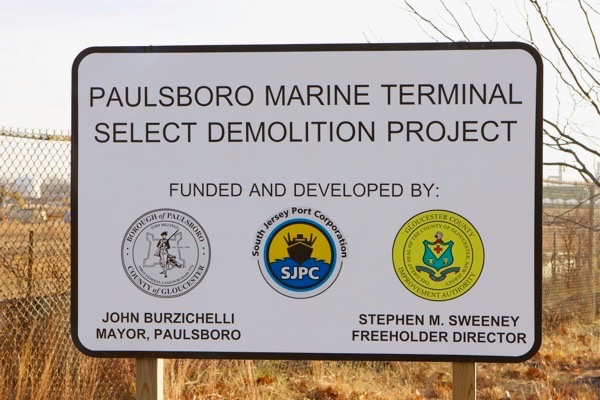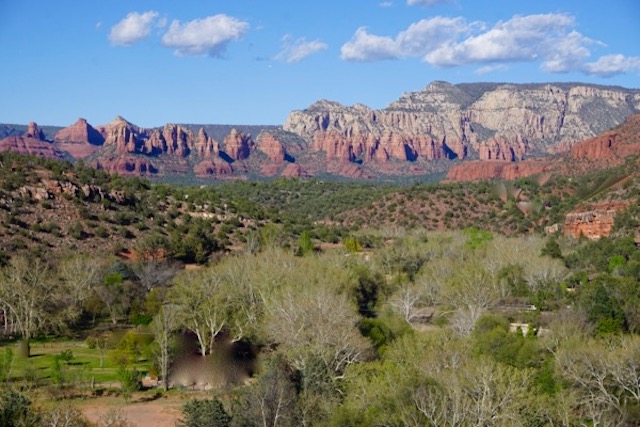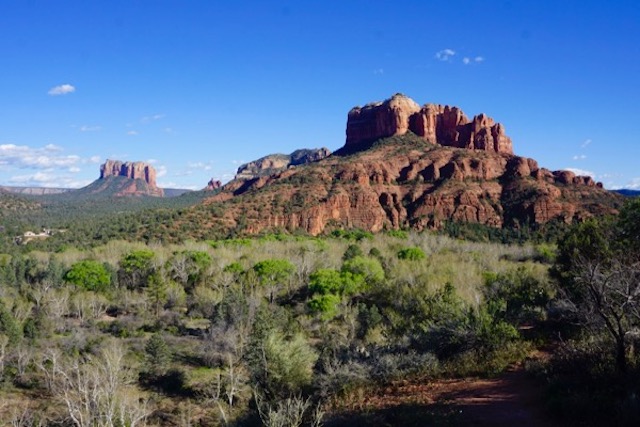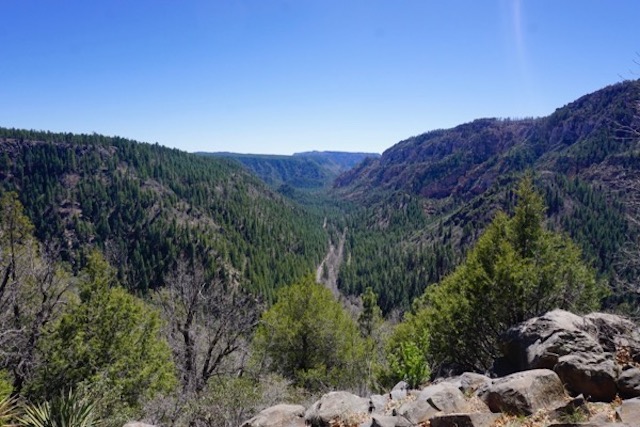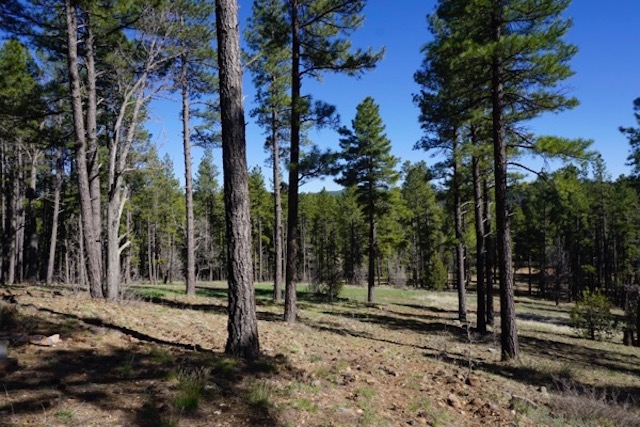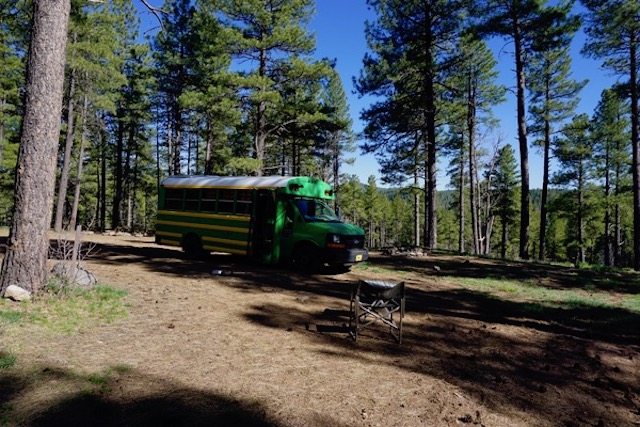Testimony Limited to The Usual Suspects – Critics Need Not Apply
Forestry Group Advocates Questionable Logging Policies
[Updates below]
The Senate and Assembly Environment committees will hold a rare joint oversight hearing on April 25 – no doubt as part of an Earth Week PR celebration – with the following objectives (according the the Committee hearing announcement):
The committees will meet jointly to receive testimony from invited guests concerning climate change mitigation, with testimony focusing on what steps the State is currently taking, and recommendations for future actions, to address greenhouse gas emissions.
The “invited guests” are as follows:
· Board of Public Utilities – President, Joseph Fiordaliso
· Department of Environmental Protection – Deputy Commissioner, Deborah Mans
· Rutgers University – Dr. Tony Broccoli, Department of Environmental Science & Dr. Robert Kopp, Department of Earth & Planetary Sciences
· New Jersey Climate Change Alliance Jeanne Herb, Alliance Co-Facilitator & Executive Director Environmental Analysis & Communications Group, at the Rutgers University Bloustein School of Planning and Public Policy and Marjorie Kaplan, Alliance Co-Facilitator & Associate Director, Rutgers Climate Institute
· NYU, Institute for Policy Integrity – Peter Howard, Economic Director & Denise Garb, Western Regional Director
· America’s Forests – Jad Daley, President & CEO
I am deeply troubled, obviously, by the “by invitation only” format, especially at a time when the public debate is exploding over major movements and policy initiatives like The Green New Deal, Climate Strike, and Extinction Rebellion, where a whole new generation engages the climate catastrophe and seriously questions a lack of real action to reduce greenhouse gas emissions to avoid catastrophic and irreversible climate tipping points.
Now is absolutely the worst time to limit public testimony to the usual suspects, whose failures have brought us to the brink of catastrophe.
Given the timing of the Murphy Administration’s impending release of the Energy Master Plan, it is also not an appropriate time to give the BPU President a platform, with no opportunity for rebuttal by scientists or public advocates of a moratorium on fossil infrastructure (and phase out of fossil).
I’ve written critically many times about NJ climate policy, including what I view as the Murphy administration’s weak appointment of Debbie Mans as DEP Deputy Commissioner and the timidity, self censorship and failures at Rutgers on climate science (see this most recent post), so I’ll say no more about all that in this post.
Previously, I’ve also criticized toothless pending legislation that is purported to address climate change. The upcoming hearing is a continuation of that sham.
But, after reading the invitation list, I also was very troubled by the inclusion of American Forests, a group I was not familiar with and that seems to have limited NJ experience and on the ground presence in NJ communities and forests, at a time when “forest stewardship” is extremely controversial.
So, I did a quick Google and was troubled by what I found, particularly about their recommended forestry practices, which led to the following letter to Senate Chairman Bob Smith:
Dear Chairman Smith –
While I applaud your efforts to conduct legislative oversight of current failed policies to reduce greenhouse gas emissions and to solicit testimony on new ideas to accelerate deep emissions reductions, I am writing for 2 reasons:
1) to object to the “by invitation only” format for the hearing and request that you open testimony up to all publics;
2) to raise concerns about the implications of the forestry policies advocated by American Forests, an invited guest with very limited NJ experience and to question the lack of balance on forestry policies.
Based exclusively on a review of American Forest’s website, they seem to be heavily corporate friendly, excessively pro-market, vague regarding regulatory frameworks, and advocate troubling forestry management practices.
https://www.americanforests.org/our-work/climate/
While the policy toolkit includes “state land use” and “regulatory” policies, those policies are not identified with any specificity and are dwarfed by the market tools and troubling forestry practices promoted.
Below are some troubling excerpts from their “policy toolkit” regarding forestry practices that they claim sequester carbon –
I left out all the market oriented stuff about carbon pricing, cap and trade, RGGI, grants, landowner and logging incentives, subsidies, and carbon offsets etcetera which are even worse and suggest a bias and unbalanced approach, see:
http://forestclimateworkinggroup.org/wp-content/uploads/2018/09/AF-FCWG-Toolkit-Digital.pdf
WOOD PRODUCTS
Wood is an extremely effective material for storing carbon. Long-lived wood products provide long-term carbon storage for nearly 100 MMt/CO2e every year—more than 10 percent of the U.S. forest carbon sink—while the working forests from which they were derived continue the growth and sequestration process.11 The increased use of wood in buildings has the potential to sequester and store over 32 million tons of carbon each year in the United States.12 Harvested forest products offer an additional climate mitigation benefit in the form of avoided emissions that occur when wood products displace the use of fossil- fuel intensive building materials, like steel and concrete. Thisadditional emissions reduction benefit from wood products is not reflected in U.S. EPA’s national GHG inventory for the land sector.
PATHWAYS FOR FOREST CARBON MITIGATION
Maintaining a strong base of healthy and resilient forests is the key to a reliable forest carbon sink. Several pathways are available to state and local policymakers to advance forest carbon mitigation while leveraging other forest ecosystem services such as forest products, air pollution abatement, drinking water supply protection, habitat preservation, and outdoor recreation. In the aggregate, the pathways below will keep forests as forests, expand forest cover, and promote forest health and resilience.
MANAGING FORESTS FOR INCREASED SEQUESTRATION
There are many ways in which forests can be managed to increase carbon sequestration, including carbon storage in wood products. Several forest management techniques increase the survival and enhance the growth of healthy trees that sequester the most carbon.19 Examples of forestry practices that strengthen forests and enable them to sequester and store more carbon include fertilizing soils; extending forest rotations to let carbon accumulate; accelerating restocking; managing competition to enhance overall growth; removing diseased trees in favor of species that grow faster and less impeded; and protecting climate-adapted tree seedlings that are most likely to thrive.
MANAGING FORESTS FOR RESILIENCE
A range of forest management practices can increase forest resilience to forest stresses that are worsening with climate change, thereby reducing potential carbon emissions and loss of future sequestration capacity. These resilience-oriented practices include but are not limited to forest treatments designed to reduce the vulnerability of forests to wildfire, and practices designed to protect forests from disease, insects, and drought. In fire-prone systems, these practices include prescribed burning and thinning to reduce wildfire severity and irreparable damage. In other systems, the primary opportunities to promote resilience include forest treatments and restoration practices that manage vegetation density and overall health. This will in turn reduce vulnerability to stresses like drought and pests that trigger increased mortality. In some cases, the forest practices that enhance sequestration (above) and increase resilience are overlapping. In many cases, forest owners and managers will want to plan these actions in tandem for the maximum carbon benefit.
FOREST PRODUCTS
Wood products from well-managed forests store forest carbon andoffer lifecycle emissions benefits compared to alternative products thatare more fossil-fuel intensive, such as aluminum and steel. It is important that carbon accounting for forest practices described above fully credits the carbon storage accomplished through wood products. This can be enhanced by helping landowners and managers better understand the storage potential in different wood products, and how they might optimize the carbon storage potential within the forest products carbon pool as part of an overall management strategy. Further, promoting forest product utilization can provide a market-based incentive to stimulate forest practices where they are needed to achieve forest health and resilience, such as thinning overstocked forests to reduce fire risk. This includes actions such as adjusting building codes to increase wood utilization, providing tax or other financial incentives for wood utilization in construction, and marketing promotions that highlight the climate change benefits of wood.
The above policies and forest management practices advocated by American Forests are deeply troubling and would result in expanded logging of NJ forests under the guise of carbon sequestration and RGGI funding.
I strongly urge you to include alternative perspectives on forest preservation and climate change to balance these views.
Respectfully,
Bill Wolfe
[Update 1: 4/18/19 – Here is NJ Senate Democrats cursory reply denying my request to open the hearing:
Hi Bill:
Yes, we are sticking with the list of invited witnesses. I suspect there will be more climate change hearings that will have a more open format. ~~~ end update]
[Update #2 – 4/22/19 – NJ Spotlight reports significant delay by BPU in releasing a draft Energy Master Plan (EMP). Climate emergency, fossil moratorium & phase out, and delay in EMP must be a critical focus of this hearing.
Green groups must focus on the fact that Gov. Murphy does not need to rely on the BPU EMP to impose a moratorium on new fossil infrastructure. Gov. Florio imposed a Moratorium on new garbage incinerators via Executive Order #8. That Order established an Emergency Task Force and gave them 120 days to issue recommendations to transform policy and regulations to make incineration an option of last resort and maximize source reduction, composting and recycling. Murphy can do the same on energy infrastructure and policy.~~~ end update]

